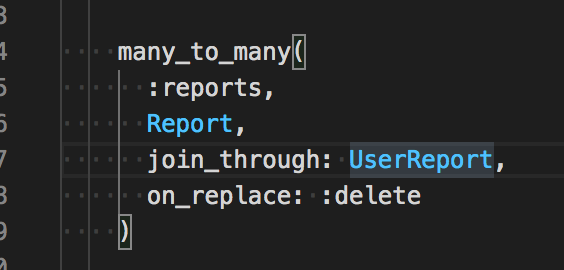

We can see how to use fragments in the following example and the SQL it produces. You can construct a small piece of SQL and Ecto will safely pass it down to the database level. Through the hard work of volunteers Elixir School has been translated to many. Whether you’re a seasoned veteran or this is your first time, you’ll find what you need in lessons and auxiliary resources. You can use a feature called “query fragments”. Welcome to Elixir School Elixir School is the premier destination for people looking to learn and master the Elixir programming language. When you are facing a situation in which you need to use some features of a database which is not supported by Ecto (yet). Although it does not cover 100% functionality some databases have. FragmentsĮcto provides a lot of functionality to work with databases. Which type of syntax to use, it is completely up to you. Thanks to Robert Beene who pointed out how to use “joins” in the comments below. This branch should not be considered stable or ready for production yet. Please check out the issues for a more complete overview. If you know how to do that, let me know in the comments below. NOTE: Since TDS version 2.0, tdsecto package is deprecated, this version supports ectosql since version 3.3.4. Looking at the documentation of those two functions youll notice that the second argument is always the columns to be used for the index (the example on drop: drop index ('posts', :name. Don't be afraid.Def handle_in ( "message:add", %Īlthough I didn’t manage to find how to properly use “joins” for that syntax. When you do drop index ('foo', :barpendingindex) youre invoking the same index/3 function used to create an index, similar to uniqueindex/3.
ELIXIR ECTO CODE
If you found this code intimidating, being comfortable with iolists both useful and important.Įlixir without Ecto isn't just possible, it's awesome. The module is easy to test, so you should a robust safety net.Īs I said earlier, you might want to look at Mobieus for something more than this quarter-baked solution. Personally, I'd suggest you start with something similar to what we've explored so far and expand it as needed. Where you take the code next is up to you. The above code captures our existing where, changes the op, executes the function, and then merges the newly generated where with the original. # first select we add shouldn't be prefixed with a commaĭef select ( % We're going to build this up slowly, starting with selecting columns from tables: defmodule A.

The only thing you'll probably need is a query builder, and you can either use this post as a rough guide or use an existing tool. Ecto is its main library for working with databases, providing us. The goal is to let you know that it's ok to use Elixir and Phoenix without Ecto. Elixir is a modern, dynamic, functional programming language used to build highly distributed and fault-tolerant applications. If you're looking for that, you might want to consider Mobieus, which I've not used, but looks solid. The goal of this post isn't to provide a complete solution. This is different than Ecto in that its only purpose is to help us safely generate SQL, we're not concerned with mapping, migrations, models, callbacks or anything else.


where (q, "status", :eq, user_status ) For this post, I'll be using fsmx, but other packages such as machinery also provide similar features. Our end goal is to be able to write code like this: q = Query. There are a couple of Elixir packages that deal with this problem. What we're going to do is leverage our knowledge of iolists to build a query builder. What about getting all users when user_status is nil? We'll need to be able to dynamically build our select statement while ensuring that we protect against SQL injections. maps! ( "select * from users where status = $1", ) For example, to get users based on their status, we can do: MyApp. One thing is obviously missing from that post: support for dynamic queries. In the last post, we looked at the basic mechanism for using elixir without ecto.


 0 kommentar(er)
0 kommentar(er)
